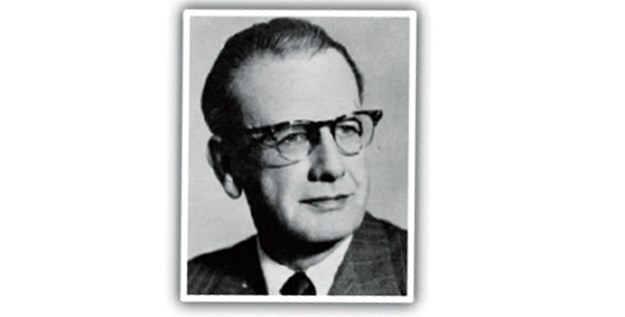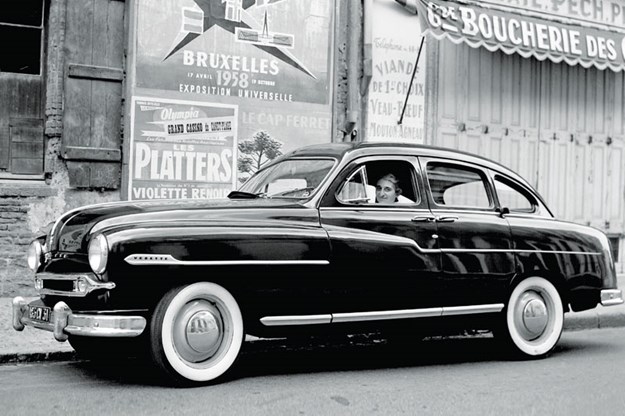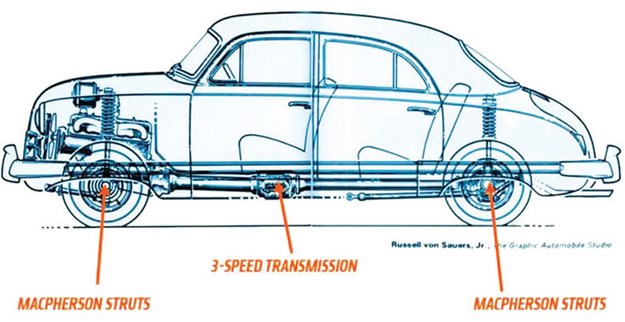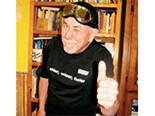Struts 'n' stuff - Blackbourn 416
 GM's Cadet - Chevrolet's stillborn small car
GM's Cadet - Chevrolet's stillborn small car


|
|
GM's Cadet - Chevrolet's stillborn small car
|
The MacPherson strut story also uncovers GM's loss and Chrysler's embarassment
Heard the one about the automotive engineer who walked into a Detroit bar in 1947? When the barman asked, "Why the long face?" he replied, "Don’t talk to my horse, talk to me. I’m paying for the drinks."
While engineer Earle Steele MacPherson – yes, the MacPherson-strut man himself – may not actually have drowned his sorrows (or even owned a horse), he was certainly entitled to have a few grievances about the way his career had suddenly gone pear shaped…
Imagine you’re MacPherson, working away at the drawing board to come up with a unique suspension design to suit Chevrolet’s all-new Cadet (it was to be Chevrolet’s first small car, intended to complete the factory’s model range for the post-WWII car market). With the concept finally sorted you stride into the Chevrolet Division manager’s office.
 Earle MacPherson
Earle MacPherson
"The usual Chevrolet suspension wasn’t the way to go," you begin. "Even scaled-down wishbones would still be expensive and heavy. I’ve come up with a new compact arrangement that’s cheaper to make, as well as reducing unsprung mass. A single tubular lower control-arm replaces both wishbones, and the anti-roll bar doubles as trailing links. The inner-guard will provide a decent top anchor-point for the strut, which cleverly packages the tubular shock inside the spring. Did I mention that it also offers more wheel travel and better handling than our usual set-up?"
"Okay, Earle, that all sounds nice," your boss replies, taking another puff on his cigar before continuing, "but it seems I forgot to let you know that we cancelled the Cadet project last month."
With years behind him working for minor industry players like Hupmobile before scoring this plum role at GM, MacPherson expected his new job would cap off his career and see him through to retirement. But the suddenly gutted MacPherson had his pride. He spat the dummy, stormed out through GM’s gates and headed down the road to Dearborn to knock on Ford’s front door.
 The MacPherson-strutted Ford Vedette
The MacPherson-strutted Ford Vedette
The Fomoco folk didn’t have to be asked twice. MacPherson was still settling in when the call came from Ford’s French operation in Poissy near Paris, where they needed a suitable front suspension set-up for their new V8-powered car, the Ford Vedette. Voila! In no time at all MacPherson’s designed-at-GM strut-package had found a home – in a new 1948-model French Ford. The design was soon also grabbed by Ford at Dagenham for its new 1950 six-cylinder Zephyr and the 1951 four-cylinder Consul. From that point the rest is MacPherson-strut history…
It was the Brit-Ford duo that introduced the MacPherson strut to Australia in the early-50s. Although the Vedette beat the Zephyr to market by a couple of years in Europe it didn’t arrive here until 1959, by-then branded the Simca Vedette (Simca bought the Poissy operation from Ford in 1954).
The US Chrysler Corporation’s plan to become a significant player in Europe had a role in Simca’s presence here. By 1958 it was buying into the French Simca business. Accordingly Chrysler Australia took over local assembly of Simcas in 1959. Its 1290cc Aronde model won some fans. The four-door, four-seater extracted surprisingly sporty performance from its alloy-head four, and it handled better than many. Other factors gave it a leg up as well: It was the first affordable car to offer lay-back seats as standard – "And have I shown you what this clever little lever does, love?" It was also the major quiz prize for some time on the top-rating Channel 9 program, In Melbourne Tonight, starring Graham Kennedy.
The Vedette however lived in the Aronde’s shadow. While size-wise it was equivalent to the six-cylinder Holdens, Zephyrs and Vauxhalls, it was French, but unlike Peugeot it hadn’t won locals over with a Redex win. Another handicap was its 2.3-litre V8 engine. Here V8s had a reputation for being thirsty. Although this was an economical small-capacity motor, buyers didn’t hear anything after ‘V8’. It wasn’t an engine to write home about though, being an outdated side-valve design that was basically a re-run of Ford USA’s V8-60 motor from 1937.
 Unsurprisingly the Vedette was hard for new-owner Chrysler to love – it had been known as the Ford Vedette for much of its European model run, and anyone looking under the bonnet would recognize the unmistakable engine-DNA of Chrysler’s arch-enemy Ford. Consequently Chrysler ceased Simca Vedette V8 production in France in 1961.
Unsurprisingly the Vedette was hard for new-owner Chrysler to love – it had been known as the Ford Vedette for much of its European model run, and anyone looking under the bonnet would recognize the unmistakable engine-DNA of Chrysler’s arch-enemy Ford. Consequently Chrysler ceased Simca Vedette V8 production in France in 1961.
Who knew that tracking the Macpherson strut suspension’s history would end up shining a light on Chrysler’s cuckoo-in-the-nest issues with the Vedette in the late-1950s? And you can see where they were coming from regarding the engine in particular, the embarrassing ‘Powered by Ford’ thing. With that in mind let’s wind the clock forward just a few years – to 1967. Chrysler had just bought the British Rootes Group. We picture a senior member of US Chrysler’s delegation spotting a tasty looking sports car among the Rootes HQ display. Curious, he wanders over to lift the bonnet and check out how the Brits power a decent sports car… the bonnet of a Sunbeam Tiger.
Unique Cars magazine Value Guides
Sell your car for free right here
Get your monthly fix of news, reviews and stories on the greatest cars and minds in the automotive world.
Subscribe

.jpg)









